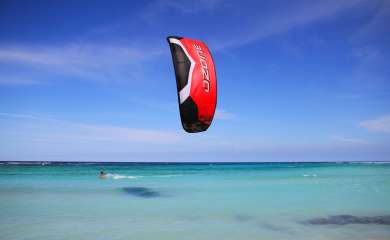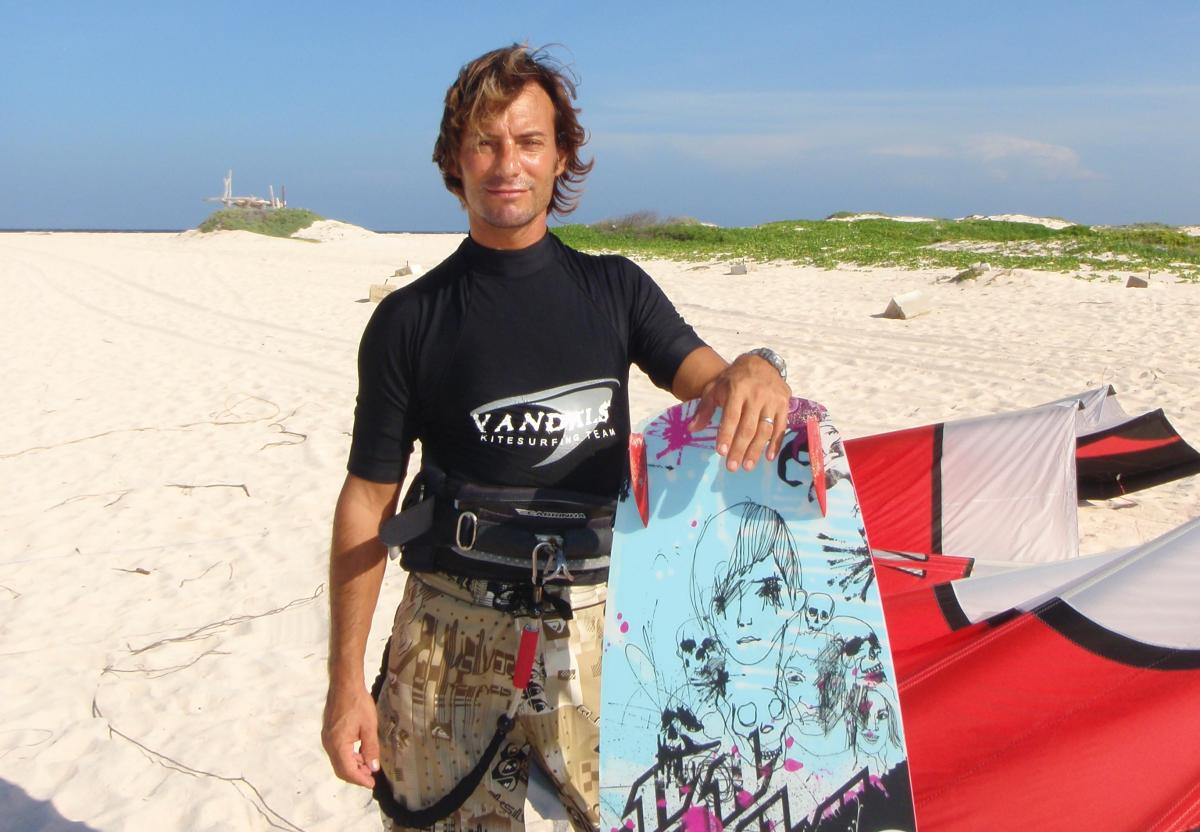Try the new IKO website at https://beta.ikointl.com/

180 Degrees Into The Wind, Examiner Fernando Dulce
16 Apr 2012
IKO Examiner Fernando Dulce used to be a photographer. “I worked ten years seven days a week for 12, 14, or even 16 hours a day with a casting company. I wanted to relax, and to take up a sport.” He saw people windsurfing and thought it looked fun, but then he saw kitesurfing and knew that was what he wanted to do. “I started learning and I loved it,” he says. He spent a year learning to kitesurf in Argentina, and it turned his whole life around 180 degrees.
From Photographer to Kiteboard Instructor,
As a photographer, he had always wanted to work around the world, but there are limited opportunities for that, unless you have a contract to work overseas. He saw that IKO instructors were needed for kiteboarding sports but they had to be certified, so he went to Brazil to do the Instructor Training Course (ITC). “I chose IKO because it was worldwide.” He liked the IKO teaching methods, “Because,” he says, “if you don’t have a background in teaching a sport, IKO teaches you a very good way to teach others.”

Fernando was certified in January 2012 as an IKO Examiner. He said he took a lot of classes and had applied to become an Examiner two or three times before they selected him. He said he had been turned down until he gained more experience at the sport and more teaching experience, and then at last received the email telling him that there was an opening for an Examiner. “It was what I wanted to do from day one,” he says. He had been kiteboarding since 2004 and teaching since 2005.
Pursuing Kiteboarding as a Sport
“The sport attracts me because of the sensation of freedom,” he exults. “With a motorcycle or a car, you have to stop and put gas in it. With kitesurfing, it’s you, the wind, the board, and nature. You feel amazing, whatever you do. You can feel the water and the wind, and you are connected with nature because you’re using nature to move.” Fernando has also taught snowkiting courses with his wife. They opened the first snowkiting school at a ski resort. His wife is also a snowkiting and kitesurfing instructor, but is taking a break now to care for their first child.
“Anyone can do this sport,” says Fernando, when asked if you had to stay in shape for kiteboarding. “I was teaching people up to 150 kilos, people as large as two normal people.” He says the sport is more technical than physical. In the beginning, people get tired after two or three hours. The average kiting experience is two hours of kiting, then resting, then two more hours. “It’s a very addictive sport,” he says. “Any new kiteboarder’s face looks as though he’s having the time of his life. I can teach someone in one week to be a safe kiteboarder.”
Aruba as a Kiteboard Destination
Currently, Fernando teaches in Aruba. “Here in Aruba, you have turtles or fish in the water, and there are fish that come out of the water, flying fish.” Aruba is also windy, for 300 days out of the year, with a lull from October to the beginning of November. The wind is also perfect for kiteboarding, averaging 15-16 knots.

In order to come to Aruba to learn to be the perfect kiteboarder, a U.S. citizen needs only a passport. There is a U.S. Customs agency on the island which makes it easy for Americans to travel there. Most of Fernando’s students are American. Fernando’s school in Aruba is called Extreme Winds and can be found at www.xtrememewinds.com.
Valuable Kiteboarding Advice Offered,
The challenge of teaching kiteboarding, Fernando relates, is after a new kiteboarder watches someone else do it. He thinks it looks easy but when he tries it, finds out it’s a little more difficult. Convincing the beginner that he can do it is the challenge. “Every student is different. You have to customize your teaching for every student. The two best classes he ever taught were in Italy and Holland. He toured Europe teaching with a Training Master. “I learned more in two weeks than I learned in eight years.”
Fernando has advice for beginners. “The most important thing is to find an IKO school. Their system is very good and safe.” His advice for those who would teach is: “Do an IKO Instructor Training Course. You learn how to teach, but you also learn psychology and about the equipment and all their techniques are based on safety.” He adds that the courses get better and have changed from when he first learned kiteboarding. He said IKO is always asking their instructors for feedback to help them upgrade and improve their courses.
.png)

